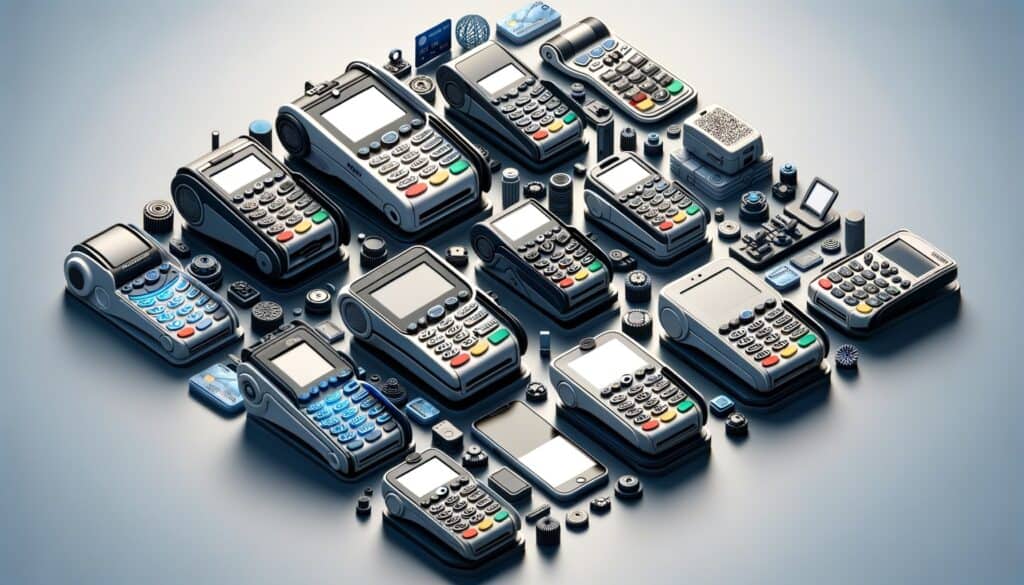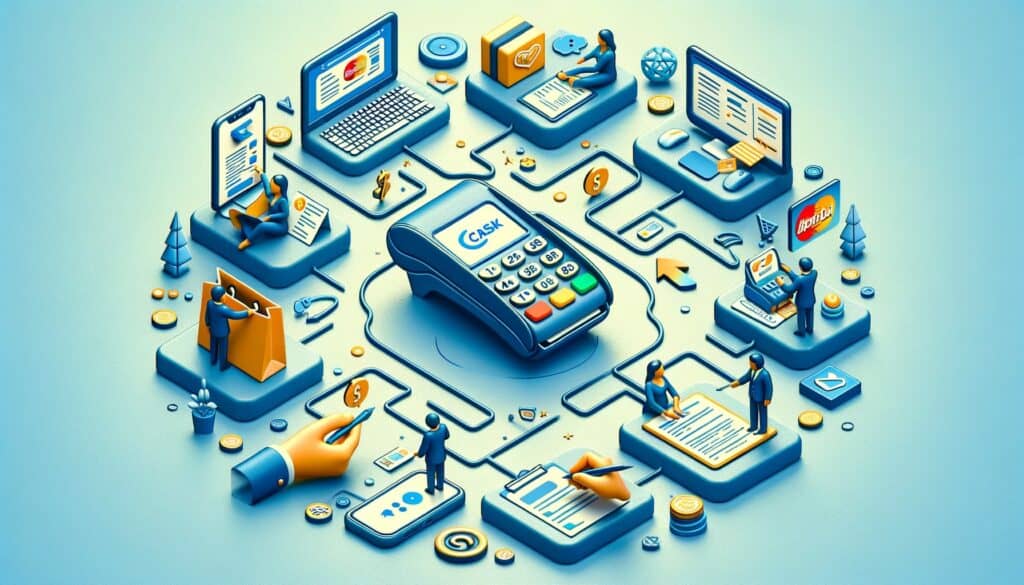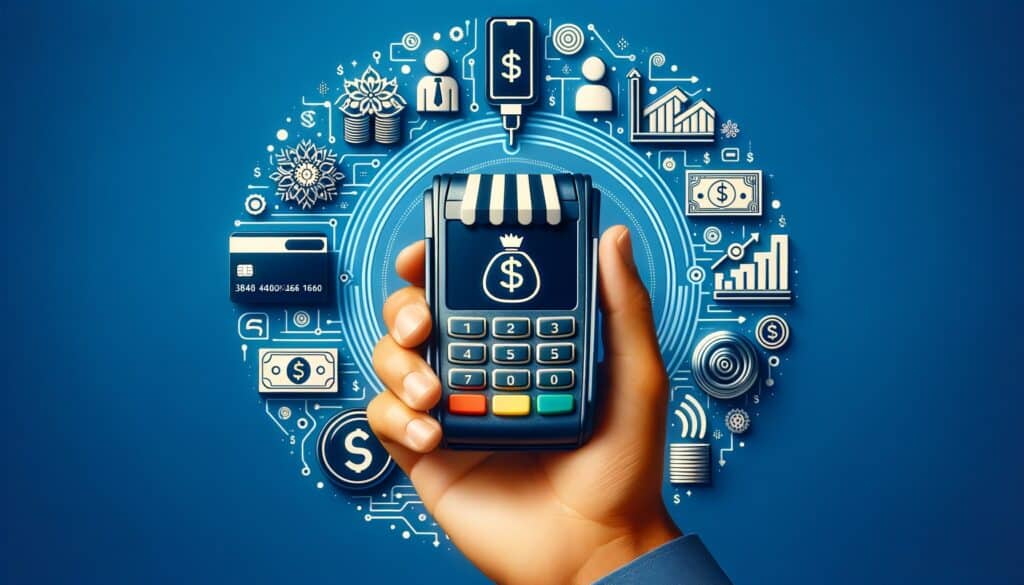
By Harriet Forster March 24, 2025
In today’s digital age, credit card terminals have become an essential tool for businesses of all sizes. Whether you run a small retail store or a large e-commerce platform, having a credit card terminal allows you to accept payments from customers using their credit or debit cards. This not only provides convenience to your customers but also opens up new avenues for revenue generation.
In this comprehensive guide, we will explore everything you need to know about getting a credit card terminal for your business.
Types of Credit Card Terminals: Choosing the Right Option for Your Business

When it comes to credit card terminals, there are several options available in the market. It is crucial to choose the right type of terminal that suits the specific needs of your business. Let’s take a look at some of the most common types of credit card terminals:
1. Traditional Wired Terminals: These are the most common type of credit card terminals that require a physical connection to a phone line or internet connection. They are reliable and offer fast transaction processing.
2. Wireless Terminals: Ideal for businesses that require mobility, wireless terminals use cellular networks to process transactions. They are perfect for businesses that operate in multiple locations or frequently participate in trade shows or events.
3. Virtual Terminals: Virtual terminals allow businesses to accept credit card payments online. They are typically used for e-commerce businesses or those that operate solely in the digital space.
4. Mobile Card Readers: These compact devices can be attached to smartphones or tablets, turning them into credit card terminals. They are perfect for small businesses or individuals who need a portable payment solution.
Factors to Consider Before Getting a Credit Card Terminal

Before diving into the process of getting a credit card terminal, there are several factors you should consider. These factors will help you make an informed decision and choose the right terminal for your business. Here are some key factors to consider:
1. Business Type and Size: The type and size of your business play a crucial role in determining the type of credit card terminal you need. Consider whether you have a physical store, an online business, or a combination of both.
2. Transaction Volume: Analyze your average transaction volume to determine the processing speed and capacity required from your credit card terminal. High-volume businesses may require terminals with faster processing capabilities.
3. Connectivity Options: Evaluate the available connectivity options in your area. If you have a stable internet connection, a wired terminal may be suitable. However, if you frequently move locations or have limited internet access, a wireless or mobile terminal may be a better choice.
4. Security Features: Ensure that the credit card terminal you choose complies with the latest security standards, such as Payment Card Industry Data Security Standard (PCI DSS). Look for features like encryption and tokenization to protect sensitive customer data.
5. Cost: Consider the upfront cost, transaction fees, and ongoing maintenance costs associated with the credit card terminal. Compare different options and choose the one that offers the best value for your business.
Step-by-Step Guide: How to Apply for a Credit Card Terminal

Now that you have a clear understanding of the different types of credit card terminals and the factors to consider, let’s dive into the step-by-step process of applying for a credit card terminal:
Step 1: Research and Compare Providers: Start by researching different credit card terminal providers and compare their offerings. Look for providers that offer the type of terminal you need and have a good reputation in the industry.
Step 2: Gather Required Documents: Most providers will require certain documents to process your application. These may include your business license, tax identification number, bank statements, and proof of address. Gather all the necessary documents before proceeding.
Step 3: Choose a Merchant Account Provider: A merchant account is required to process credit card transactions. Research different merchant account providers and choose the one that offers competitive rates and reliable service.
Step 4: Complete the Application: Fill out the application form provided by the credit card terminal provider. Provide accurate information about your business, including its legal structure, industry, and estimated transaction volume.
Step 5: Wait for Approval: Once you have submitted your application, the provider will review it and perform a credit check. This process may take a few days to a couple of weeks. Be patient and wait for the approval.
Step 6: Purchase or Lease the Terminal: After your application is approved, you can proceed to purchase or lease the credit card terminal. Consider the cost, warranty, and support options offered by the provider before making a decision.
Understanding Merchant Accounts and Payment Processors

To fully grasp the concept of credit card terminals, it is essential to understand the role of merchant accounts and payment processors. A merchant account is a type of bank account that allows businesses to accept credit card payments. When a customer makes a purchase using a credit card, the payment is processed through a payment processor, which securely transfers the funds from the customer’s account to the merchant’s account.
Setting Up Your Credit Card Terminal: Installation and Configuration
Once you have obtained your credit card terminal, the next step is to set it up for use. The process may vary depending on the type of terminal you have chosen. Here is a general guide to help you with the installation and configuration:
1. Unbox and Inspect: Carefully unbox your credit card terminal and inspect it for any physical damage. Ensure that all the necessary components, such as cables and power adapters, are included.
2. Connect to Power: Plug in the power adapter and connect it to a power source. Make sure the terminal is receiving power before proceeding.
3. Connect to the Internet: If you have a wired terminal, connect it to a phone line or internet connection using the provided cables. For wireless terminals, follow the manufacturer’s instructions to connect to a cellular network.
4. Configure Settings: Depending on the terminal, you may need to configure certain settings, such as language, time zone, and receipt options. Refer to the user manual or contact customer support for guidance.
5. Test the Terminal: Perform a test transaction to ensure that the terminal is functioning correctly. Use a test credit card or contact your payment processor for assistance.
Accepting Payments: How to Use Your Credit Card Terminal
Now that your credit card terminal is set up and ready to use, it’s time to start accepting payments. Here is a step-by-step guide on how to use your credit card terminal:
1. Enter the Sale Amount: When a customer is ready to make a purchase, enter the sale amount into the terminal. Make sure to double-check the amount to avoid any errors.
2. Swipe, Insert, or Tap the Card: Depending on the type of terminal and the customer’s card, you may need to swipe, insert, or tap the card on the terminal. Follow the on-screen instructions to complete the transaction.
3. Verify the Transaction: Once the card is processed, the terminal will display the transaction details. Verify the amount and ask the customer to confirm the purchase.
4. Obtain Customer Signature: If required, ask the customer to sign the receipt or provide their digital signature on the terminal’s screen. This provides proof of the transaction.
5. Provide Receipt: Print or email a receipt for the customer, depending on the terminal’s capabilities. Make sure to keep a copy of the receipt for your records.
Troubleshooting Common Issues with Credit Card Terminals
While credit card terminals are generally reliable, there may be instances where you encounter issues. Here are some common problems and their possible solutions:
1. Connection Issues: If your terminal is not connecting to the internet or cellular network, check the cables and ensure that you have a stable connection. Restart the terminal if necessary.
2. Card Reading Errors: If the terminal is having trouble reading cards, clean the card reader with a soft cloth. If the issue persists, contact customer support for further assistance.
3. Slow Transaction Processing: Slow transaction processing may be due to a poor internet connection or outdated software. Check your internet speed and update the terminal’s software if necessary.
4. Error Messages: If you receive error messages on the terminal’s screen, refer to the user manual or contact customer support for guidance. They will be able to assist you in troubleshooting the specific error.
Frequently Asked Questions (FAQs) about Credit Card Terminals
Q1. What is the difference between a credit card terminal and a payment gateway?
Answer: A credit card terminal is a physical device used to process credit card transactions, while a payment gateway is a software application that securely transfers payment information between the customer, merchant, and payment processor.
Q2. Can I use my existing merchant account with a new credit card terminal?
Answer: In most cases, you can use your existing merchant account with a new credit card terminal. However, it is recommended to check with your merchant account provider to ensure compatibility.
Q3. Are there any ongoing fees associated with credit card terminals?
Answer: Yes, there are usually ongoing fees associated with credit card terminals, such as transaction fees, monthly service fees, and equipment leasing fees. Make sure to review the terms and conditions before making a decision.
Q4. Can I accept contactless payments with a credit card terminal?
Answer: Yes, many credit card terminals support contactless payments, such as Apple Pay and Google Pay. Make sure to choose a terminal that offers this feature if you want to accept contactless payments.
Conclusion
In conclusion, credit card terminals are an essential tool for businesses looking to accept credit and debit card payments. By understanding the different types of terminals, considering the factors that affect your choice, and following the step-by-step guide, you can successfully obtain a credit card terminal for your business.
Remember to choose a terminal that suits your specific needs, set it up correctly, and familiarize yourself with its operation. With a reliable credit card terminal in place, you can provide a seamless payment experience to your customers and boost your business’s revenue potential.